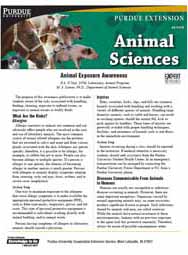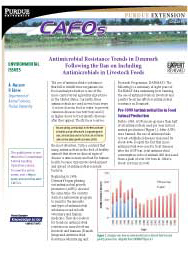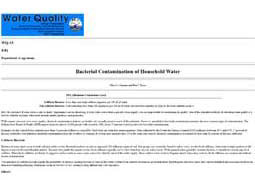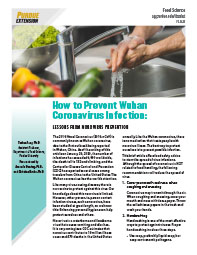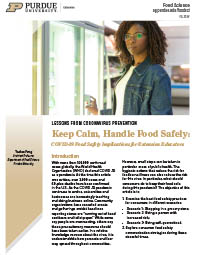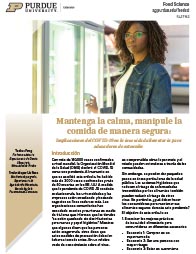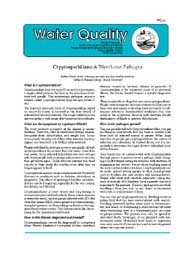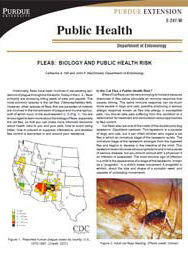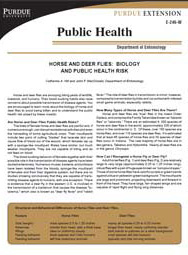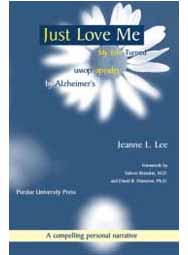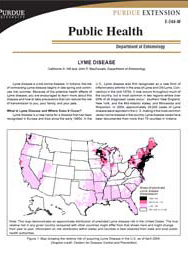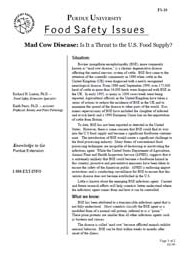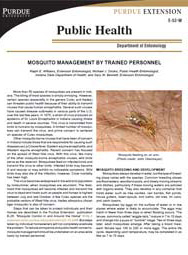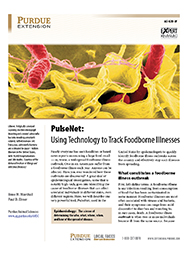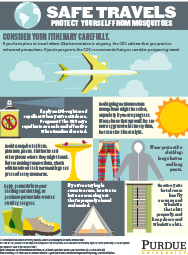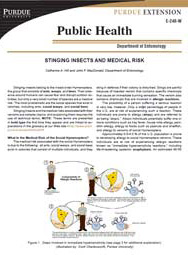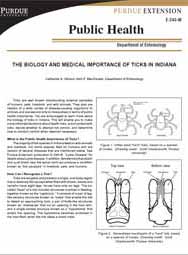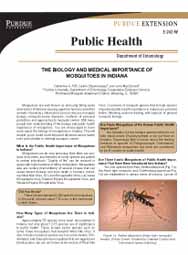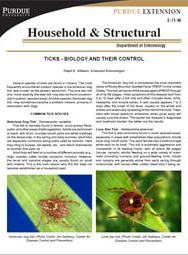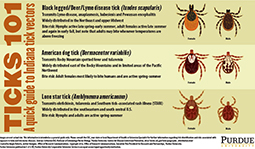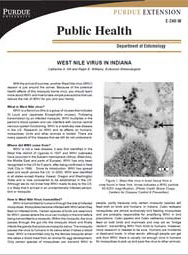Home & Family
Human Diseases
The purpose of this publication is to make workers and students who handle animals aware of the associated risks with handling, feeding, cleaning, or exposure to animal wastes. There should be methods for monitoring expo...
The use of antimicrobials (substances that kill or inhibit microorganisms) in food animal production is one of the more controversial agricultural practices in the United States. The author of this 4-page PDF publication...
Bacterial Contamination of Household Water
Explains how coliform bacteria can enter water supplies and the possible effects of bacterial contamination. Testing and treatment guidelines are provided....
Black Flies: Biology and Public Health Risk
Black flies, known also as "buffalo gnats" and "turkey gnats," are very small, robust flies that are annoying biting pests of wildlife, livestock, poultry, and humans. Their blood-sucking habits also raise concerns about...
Coronavirus Prevention and Food Safety Implications
No vaccine is available to counter the coronavirus outbreak. Lessons from norovirus prevention tell us that enhanced personal hygiene is one method to protect ourselves and others. In this paper, available in English and...
Coronavirus Prevention and Food Safety Implications (Chinese Simplified)
No vaccine is available to counter the coronavirus outbreak. Lessons from norovirus prevention tell us that enhanced personal hygiene is one method to protect ourselves and others. In this paper, available in English and...
Coronavirus Prevention and Food Safety Implications (Chinese Traditional)
No vaccine is available to counter the coronavirus outbreak. Lessons from norovirus prevention tell us that enhanced personal hygiene is one method to protect ourselves and others. In this paper, available in English and...
COVID-19: Food Safety Implications for Extension Educators
As the COVID-19 pandemic evolves, food safety is a growing concern. This publication, by a Purdue University professor, provides guidance to Purdue University Extension Educators as they help educate consumers about step...
COVID-19: Food Safety Implications for Extension Educators - Chinese Simple
As the COVID-19 pandemic evolves, food safety is a growing concern. This publication, by a Purdue University professor, provides guidance to Purdue University Extension Educators as they help educate consumers about step...
COVID-19: Food Safety Implications for Extension Educators - Chinese Traditional
As the COVID-19 pandemic evolves, food safety is a growing concern. This publication, by a Purdue University professor, provides guidance to Purdue University Extension Educators as they help educate consumers about step...
COVID-19: Food Safety Implications for Extension Educators - Spanish
As the COVID-19 pandemic evolves, food safety is a growing concern. This publication, by a Purdue University professor, provides guidance to Purdue University Extension Educators as they help educate consumers about step...
Cryptosporidium: A Waterborne Pathogen
This publication discusses what cryptosporidium is, the symptoms, diagnosis and treatment, and several questions pertaining to the disease....
Fleas: Biology and Public Health Risk
Historically, fleas have been involved in devastating epidemics of plague throughout the world. Today in the U. S., fleas primarily are annoying biting pests of pets and people. The most common species is the cat flea, C...
Horse and Deer Flies: Biology and Public Health Risk
Horse and deer flies are annoying biting pests of wildlife, livestock, and humans. Their blood sucking habits also raise concerns about possible transmission of disease agents. You are encouraged to learn more about the ...
Just Love Me: My Life Turned Upside-down by Alzheimer's (paperback)
Just Love Me reveals the thoughts and emotions of a woman struggling with a suddenly unmanageable life, numerous hospitalizations, suicide attempts, everyday turmoil, and finally, the arduous search for an accurat...
This resource covers the cause, transmission, and biology of lyme disease. It also has a diagram on tick removal....
Mosquito Management by Trained Personnel
Mosquitoes are pests that most people try to control due to their annoying biting and the risk of disease transmission. This publication outlines the development and breeding of mosquitoes and provides information on the...
Protecting Yourself from Wildlife Diseases: Raccoon Roundworm (Baylisascaris procyonis)
Roundworms are parasitic organisms that live in the intestines of animals (including humans). The raccoon roundworm lives in the intestines of raccoons. The roundworm survives by feeding on nutrients that the raccoon has...
PulseNet: Using technology to track foodborne illnesses
One in six Americans suffers a foodborne illness each year. PulseNet is one method the CDC uses to identify such illnesses and limit or prevent outbreaks. This publication explains how researchers, relying on laboratorie...
Safe Travels: Protect Yourself from Mosquitoes
This handy, one-page infographic offers tips to help protect yourself from Zika and other mosquito-borne illnesses when you travel.
Format: PDF.
Pages: 1.
Language...
Stinging Insects and Medical Risk
This publication discusses the stinging insects and the medical risks associated with their venoms. Stinging insects belong to the insect order Hymenopera, the group...
The Biology and Medical Importance of Ticks in Indiana
This resource covers the biology of Indiana ticks. Graphics on tick removal and life cycles along with tick habitats are shown in this publication....
The Biology of Indiana Mosquitoes
Mosquitoes are well known as annoying biting pests and vectors of disease-causing agents to humans and other animals. This publication examines mosquito biology, mosquito-borne diseases, methods of personal protection, a...
Ticks - Biology and Their Control
Describes the habits of the two kinds of ticks commonly found in Indiana. Discusses measures that campers and hikers can take to protect themselves from ticks. Provides suggestions for outdoor and indoor tick control and...
Ticks 101: A Quick Start Guide to Indiana Tick Vectors
This handy, one-page infographic offers tips to help you identify the most common ticks in Indiana — and the diseases they can transmit.
Format: PDF.
Pages: 1.
This resource discusses the symtoms and how West Nile Virus is transmitted. Life cycles and breading sites are shown in this publication too....









